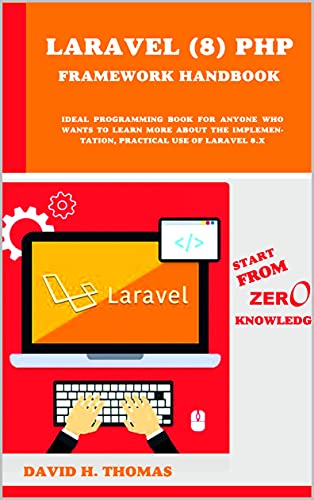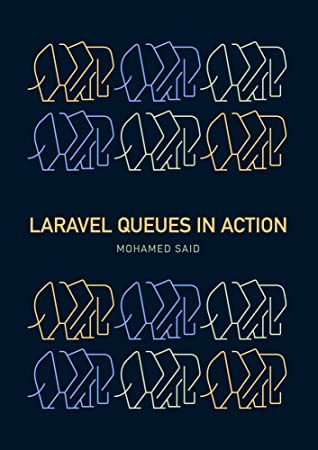Download this PDF book: Learning PHP Design Patterns 1st Edition by William Sanders
Build server-side applications more efficiently—and improve your PHP programming skills in the process—by learning how to use design patterns in your code.
This book shows you how to apply several object-oriented patterns through simple examples, and demonstrates many of them in full-fledged working applications.
Learn how these reusable patterns help you solve complex problems, organize object-oriented code, and revise a big project by only changing small parts. With Learning PHP Design Patterns, you’ll learn how to adopt a more sophisticated programming style and dramatically reduce development time.
Learn design pattern concepts, including how to select patterns to handle specific problems
Get an overview of object-oriented programming concepts such as composition, encapsulation, polymorphism, and inheritance
Apply creational design patterns to create pages dynamically, using a factory method instead of direct instantiation
Make changes to existing objects or structure without having to change the original code, using structural design patterns
Use behavioral patterns to help objects work together to perform tasks
Interact with MySQL, using behavioral patterns such as Proxy and Chain of Responsibility
Explore ways to use PHP’s built-in design pattern interfaces
Table of Contents:
Part I. Easing into the Fundamentals of Design Patterns
1. PHP and Object-Oriented Programming
2. Basic Concepts in OOP
3. Basic Design Pattern Concepts
What Is the Difference Between Design Patterns and Frameworks?
4. Using UMLs with Design Patterns
Part II. Creational Design Patterns
5. Factory Method Design Pattern
6. Prototype Design Pattern
Part III. Structural Design Patterns
7. The Adapter Pattern
8. Decorator Design Pattern
Part IV. Behavioral Design Patterns
9. The Template Method Pattern
10. The State Design Pattern
Part V. MySQL and PHP Design Patterns
11. A Universal Class for Connections and a Proxy Pattern for Security
12. The Flexibility of the Strategy Design Pattern
13. The Chain of Responsibility Design Pattern
14. Building a Multidevice CMS with the Observer Pattern
Contents of This Book
This book is organized into five parts.
Part I is an OOP refresher/introduction:
Chapter 1 introduces object-oriented programming (OOP) and how to more easily handle complex programming problems with modularization.
Chapter 2 discusses basic concepts in OOP such as abstraction, encapsulation, in‐ heritance, and polymorphism, as well as the PHP structures that implement these concepts.
Chapter 3 moves on to examine the basic concepts in design patterns, their cate‐ gorization, and how specific patterns are selected to handle specific problems.
Chapter 4 introduces Unified Modeling Language (UML) and explains how it will be employed in this book.
Part II covers creational design patterns:
Chapter 5 examines the Factory Method, which has a creational purpose and a class scope. Examples include dynamically creating pages that display graphics, body text, and header text.
Chapter 6 shows how to use the Prototype pattern, which has a creational purpose and an object scope. The Prototype pattern is used when a single object is created as a prototype and then cloned to economically create further instances.
Part III explains structural design patterns:
Chapter 7 illustrates how to use the Adapter pattern in both class and object scopes. Examples show how to take an existing structure and make changes that allow the developer to add new functionality.
Chapter 8 explains how an existing object can be changed without disrupting a larger program using the Decorator pattern. You’ll see how to decorate male and female dating objects with different preferences in a dating site.
Part IV looks at behavioral design patterns:
Chapter 9 shows how to use the Template Method pattern—one of the easiest design patterns to both create and use. In addition, you will see how the famous Hollywood Principle operates in design pattern programming. As a final feature of the chapter, two different patterns are combined to solve a single problem.
Chapter 10 presents the State design pattern along with how to use statecharts to map state processes and changes.
Part V introduces four more behavioral design patterns used in conjunction with MySQL:
Chapter 11 provides the Universal connection class and the Proxy design pattern for adding security to usernames and passwords stored in a MySQL database.
Chapter 12 explains how the Strategy design pattern is significantly different from the State pattern even though they have identical class diagrams. A survey example illustrates how the Strategy pattern can be used with different MySQL requests.
Chapter 13 has multiple examples of how the Chain of Responsibility pattern can be used, ranging from a Help Desk to automatically responding to a date timer to display (in conjunction with the Factory Method pattern) images and text.
Chapter 14 is the first to explore how to use the PHP built-in design pattern inter‐ faces. The Observer design pattern can use interfaces from the Standard PHP Li‐ brary. Another example uses the Observer design pattern with hand-built interfaces to make a simple content management system (CMS) with PHP and MySQL.
About the Author
Dr. William B. Sanders is a Professor of Multimedia Web Design and Development at the University of Hartford. He teaches courses in PHP, MySQL, C#, SQL, HTML5, CSS, and ActiionScript 3.0 among other Internet languages. He co-authored ActionScript 3.0 Design Patterns (O’Reilly, 2007) and has been actively working with design patterns in PHP for several years.
He has published 45 computer and computer-related books, written software ranging from Basic to Assembly Language to Flash Media Server and served as a consultant and beta tester for different computer software companies including Macromedia and Adobe. He also is an Apple iOS Devloper.
About the book:
Publisher : O'Reilly Media; 1st edition (March 19, 2013)
Language : English
Pages : 362
File: PDF, 9MB
Free Download the Book: Learning PHP Design Patterns 1st Edition by William Sanders
PS: Share the link with your friends
If the Download link is not working, kindly drop a comment below, so we'll update the download link for you.
Happy downloading!








